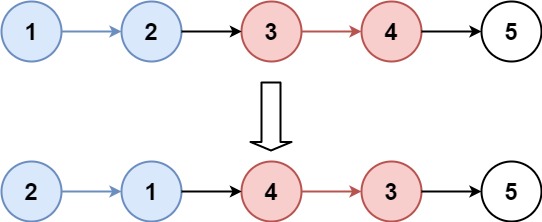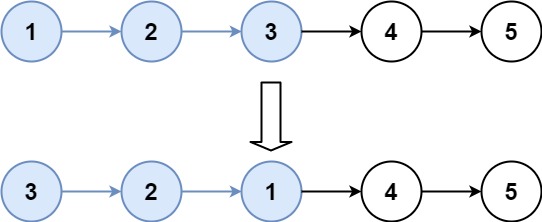20. Reverse Nodes in k-Group
IMP
Given a linked list, reverse the nodes of a linked list k at a time and return its modified list.
k is a positive integer and is less than or equal to the length of the linked list. If the number of nodes is not a multiple of k then left-out nodes, in the end, should remain as it is.
Example 1:

Input: head = [1,2,3,4,5], k = 2
Output: [2,1,4,3,5]Example 2:

Input: head = [1,2,3,4,5], k = 3
Output: [3,2,1,4,5]Example 3:
Input: head = [1,2,3,4,5], k = 1
Output: [1,2,3,4,5]Example 4:
Input: head = [1], k = 1
Output: [1]Solution:
Approach:
Adding a prenode and changing 3 pointers
Time Complexity: O(n) Space Complexity: O(1)
Last updated
Was this helpful?